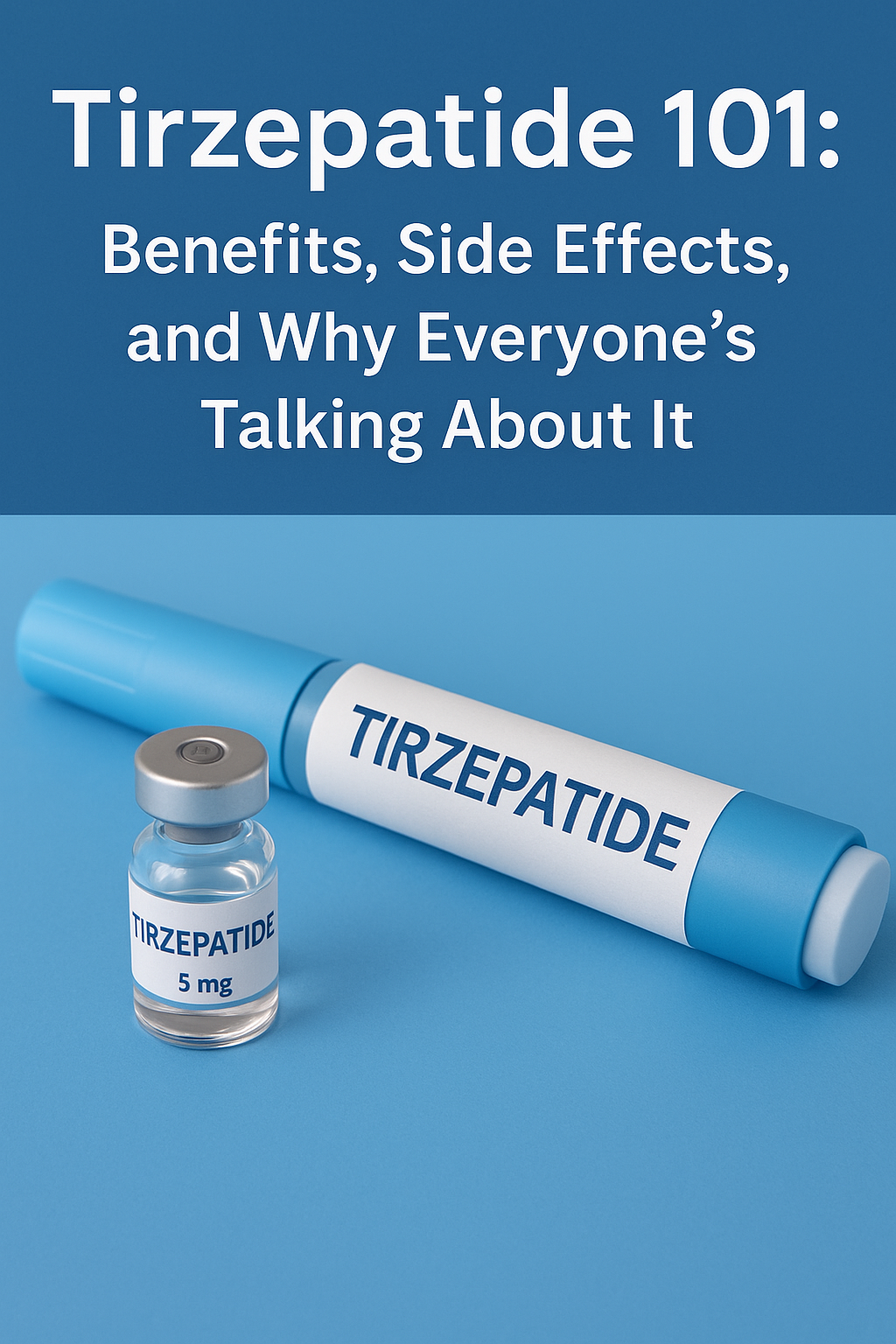Tirzepatide 101: Benefits, Side Effects, and Why Everyone’s Talking About It
Why Tirzepatide Is the Most Talked About Medication in Metabolic Health Right Now

Tirzepatide 101: Benefits, Side Effects, and Why Everyone’s Talking About It
If you've been paying attention to the world of weight loss and diabetes treatment, you’ve probably heard the buzz around Tirzepatide—and for good reason. This groundbreaking medication is shaking up the health industry with its dual-action power and remarkable clinical results.
But what exactly is Tirzepatide? How does it work? And more importantly—is it right for you or your patients? Let’s break it all down.
What Is Tirzepatide?
Tirzepatide is a once-weekly injectable medication developed by Eli Lilly, originally approved for the treatment of type 2 diabetes under the brand name Mounjaro. But it didn’t take long for the medical community to realize its massive potential for weight loss—so much so that it's now being investigated and prescribed off-label for obesity, much like its GLP-1 cousins, Semaglutide (Ozempic, Wegovy).
What sets Tirzepatide apart? It’s the first-in-class dual GIP and GLP-1 receptor agonist—meaning it targets two powerful hormonal pathways involved in insulin regulation, blood sugar control, and appetite suppression.
The Benefits of Tirzepatide
Let’s talk about why everyone’s talking:
1. Major Weight Loss
In clinical trials, patients lost up to 22.5% of their body weight—numbers that rival bariatric surgery. That’s not just impressive—it’s historic.
2. Better Blood Sugar Control
Tirzepatide outperformed competitors like Semaglutide in lowering A1C levels, offering better glycemic control for people with type 2 diabetes.
3. Appetite Regulation
By mimicking key gut hormones, it slows gastric emptying and reduces cravings, helping users feel full longer.
4. Cardiometabolic Benefits
Early studies suggest improvements in cholesterol, blood pressure, and inflammatory markers, all of which play a major role in heart health.
How Does Tirzepatide Work?
Tirzepatide combines the action of GLP-1 (glucagon-like peptide-1) and GIP (glucose-dependent insulinotropic polypeptide)—two gut hormones that work synergistically to:
- Stimulate insulin secretion
- Suppress glucagon (which raises blood sugar)
- Slow gastric emptying
- Curb appetite and promote satiety
In plain English: It helps you eat less, store less fat, and burn more efficiently.
Potential Side Effects of Tirzepatide
No drug is perfect—and Tirzepatide isn’t without its downsides. While most side effects are mild to moderate, it’s smart to know what you’re getting into.
Most Common Side Effects:
- Nausea
- Vomiting
- Diarrhea
- Constipation
- Fatigue
These usually occur when starting treatment or increasing the dose—and often subside as your body adjusts.
Less Common but Serious Risks:
- Pancreatitis
- Gallbladder issues
- Risk of thyroid C-cell tumors (seen in rodent studies—not confirmed in humans)
It’s not recommended for individuals with a personal or family history of medullary thyroid carcinoma (MTC) or MEN2 syndrome.
Is Tirzepatide Right for You?
Tirzepatide might be a fit if you:
Struggle with type 2 diabetes
Are clinically obese (BMI ≥30) or overweight with related health issues
Have tried other medications without success
Want a once-weekly, non-stimulant solution
It’s important to consult with a qualified healthcare provider to determine if Tirzepatide is appropriate based on your individual health profile.
The Bottom Line
Tirzepatide is not just another weight loss drug—it’s a revolution. With unmatched results in both glycemic control and body weight reduction, it’s no wonder this medication is making waves in both the diabetes and wellness worlds.
Whether you're a patient looking for solutions, a healthcare provider exploring options, or someone curious about the science—Tirzepatide is one name you’ll be hearing a lot more of.



